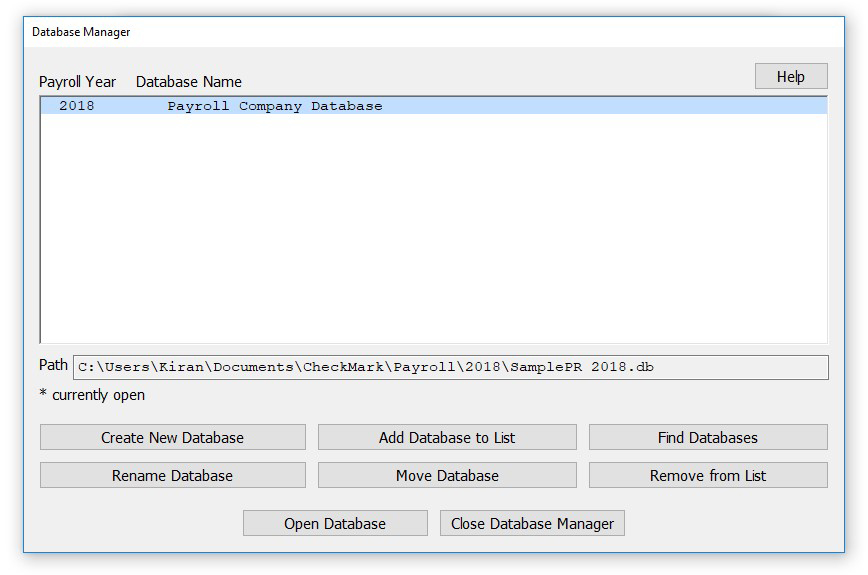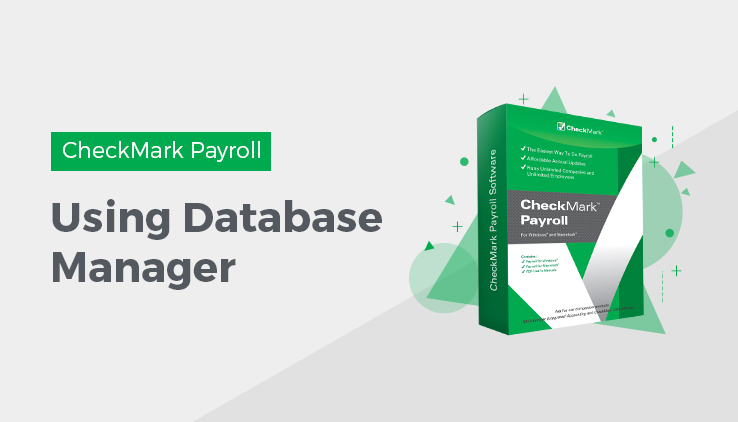
CheckMark Payroll stores company data in a database. When you initially open CheckMark Payroll Software, a database named Default Payroll Company Database is created (the path is as follows: HDCheckMarkPayroll[year]Default_Payroll_Company_Database_ [year]).
If you process payroll for only one company, this is probably the only database you’ll ever need.
If, however, you process payroll for more than one company, you should consider the following scenarios to manage your companies correctly. You can either store all your company files in the same database, or you can create two or more separate databases and store individual companies in them.
Storing All Company Files in the Same Database
Each database can contain multiple companies. The advantage to storing all your different company files in one database is that when you Backup Database, Restore Database, Close Database, or advance to a New Year, all companies stored in that database will be backed up, restored, closed or advanced to a New Year at the same time, saving you time.
Storing Company Files in Separate Databases
The advantage to storing each of your company files in separate databases is that you have more control over where each database is stored on your computer, as well as when you want to Backup Database, Restore Database, Close Database, or advance companies to a New Year.
Using the Database Manager in CheckMark Payroll
Choose Database Manager from the File menu.
Create New Database
This option allows you to create and save a new database in any location you wish. Keep in mind that each database can store multiple companies.
- Click Create New Database.
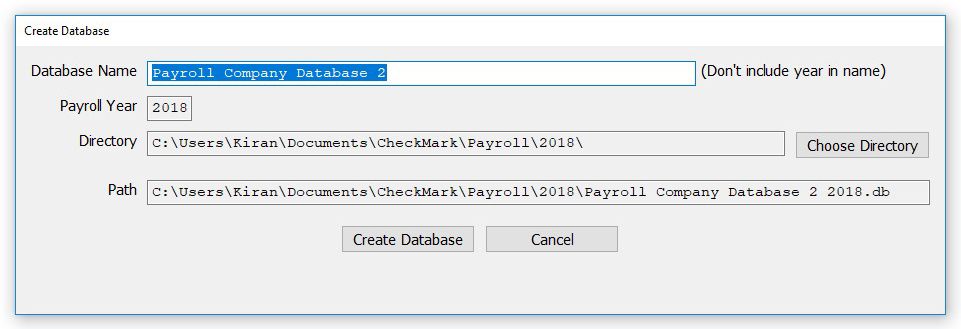
2. Enter a Database Name and Payroll Year. Click the Browse button to select a new location to save the database.
3. Click Create Database to save the new database.
Add Database to List
This button allows you to add an already-existing database to the list. For example, if you copied over a database from another computer and the Database Manager does not list this database, you can choose Add Database to List and browse to that location to update the Database Manager’s list.
- Click Add Database.
An Open dialog box appears.
2. Browse to the location where the database is saved.
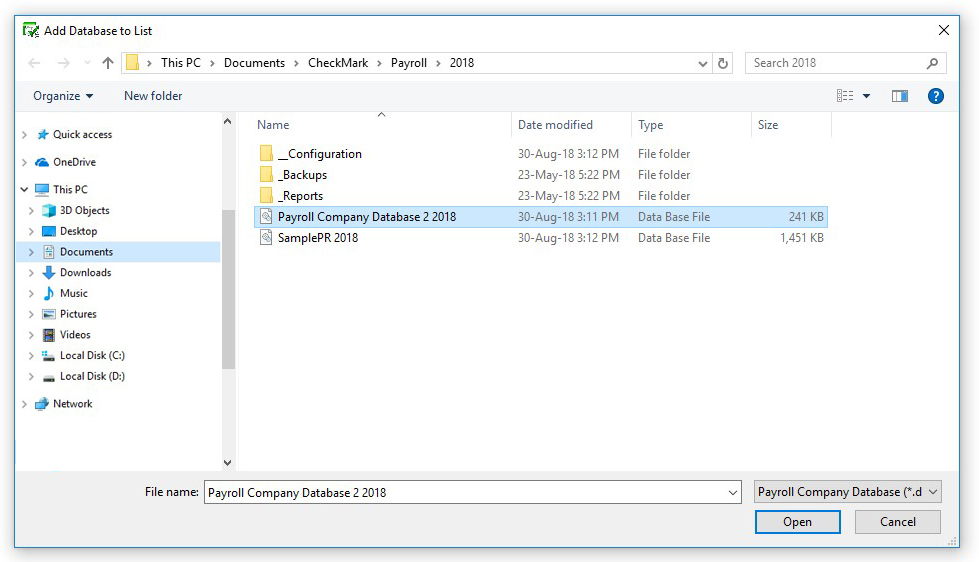
3. Select the database and click Open.
The database is added to the list in the Database Manager.
Rename Database
This option allows you to rename the database. It is recommended you use only alpha-numeric characters.
- Click Rename Database.
The following alert appears:
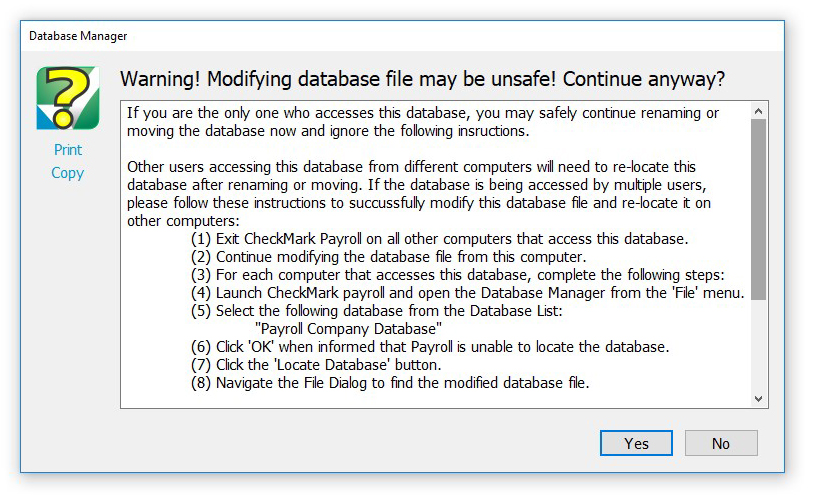
The Rename Database window appears.
2. Click Yes.

3. Enter the new name and click Rename Database to Save.
Remove From List
This option allows you to remove a database from the list.
Note: This only removes the listing in the Database Manager. It does not delete the database file from the saved location. To delete a database, you will need to manually delete the database (.db) file from your hard drive or saved location.
- Click Remove From List.
A warning message appears.

2. Click Yes to remove the database from the Database Manager list.
You can add the database again at anytime by using the Add Database command.
Open Database
This option allows you to choose a different database and open it up to view all saved payroll companies in that particular database.
- Select the database you want to open and press Open Database.
The new database is now open and all companies stored in this database are available under the Open Company command under the File menu.
Close Database Manager
This option closes the Database Manager window.
Open Company
This command allows you to choose a specific company in an available database. Once the program is launched, choose Open Company from the File menu. Select the database, if necessary, then select the payroll company to open and click Open Company.
Delete Company
You can also choose to delete a company from the database list by going under the File menu and selecting Delete Company. Select the company you wish to delete and click the Delete Company button. If you delete a set of files in this way, they cannot be recovered without a previously saved backup archive.
Exiting CheckMark Payroll
To exit or quit CheckMark Payroll:
- Choose Exit from the File menu (Windows)
- Choose Quit from the CheckMark Payroll menu (Mac)
Related Articles
How to Get Started with CheckMark Payroll?
How to Install CheckMark Payroll
How to Use Command Center in CheckMark Payroll
Tips for Navigating Windows Within Payroll

